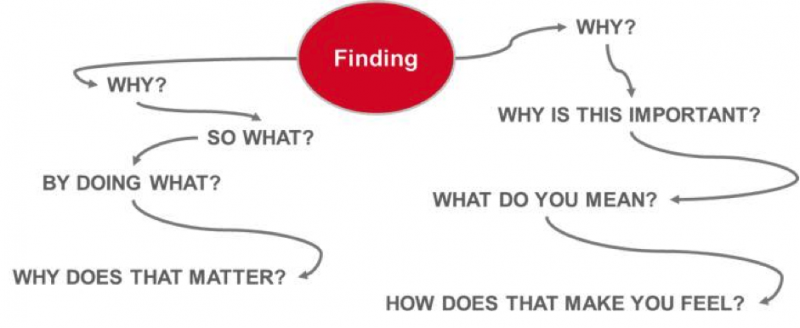Insights, not data or facts, are the fuel for new ideas. They’re the inspiration for creating brand differentiation in a market place of similar offerings, and the ultimate drivers of commercial advantage. Newton was famously hit on the head by a falling apple. However, it was not this fact that changed the world or the reason that he is one of the most famous scientists ever. The event triggered a question, why? Newton’s genius was in interrogating the facts, concluding that an invisible force we now call gravity was responsible, and then proving this was the case. It is without doubt a staggeringly powerful, and famous, insight but can asking ‘why’ also bring inspiration to brands?
Nintendo dramatically changed its fortunes in the gaming sector by acting on a clear insight. Their data showed the market for gaming was shrinking and was limited to ‘serious’ gamers – generally young men. Asking ‘why’ identified that the increasing complexity and level of involvement required to play video games was a major barrier to entry for ‘non-gamers’. This insight drove the development and positioning of the Wii, a console with simple intuitive games and controllers that allowed the players to mimic the real world actions used in tennis, golf and many other activities.
The marketing campaign built on the same insight, the emphasis being firmly placed on families playing games that were easy to learn and designed to be played together. At the time this was a radically different proposition to its competition, driving a sales uplift that resulted in Nintendo becoming, for a while at least, Japan’s second most valuable company after Toyota.
So insights can be the catalysts for radically improving brand performance but how do we uncover them? Typically the most fertile ground for digging up insights is where audience and brand interact. Researching audience brand perceptions provides useful data but it’s only when you start interrogating where those perceptions came from and ‘why’ they’re held that you get into insight territory.
One really helpful tool is an ‘insight storm’ (see below). This is a key finding or behaviour placed in the middle of page. Then you just keep asking why until you can’t come up with anything more.
For example, if your finding is that women aged 15-35 don’t play on games consoles. Your ‘insight storm’ might look something like the below.
The ‘insight storm’ exercise is about opening minds. If Nintendo had taken the finding at face value then the chances are they would no longer exist. By interrogating the facts they found a new purpose and perspective for consoles – bringing families together to have fun and get active. Discovering insights isn’t easy but when you get it right they have the power to amplify brand value and totally change market places.
So what’s next for Nintendo and can they dominate the next generation of consoles? We’ll have to wait and see but from a marketing perspective they appear to be going backwards with the ‘Wii U’. The name and the controller seem to set the tone – it looks like it’s more about going back to an individual experience than a shared, simple fun for all the family approach. It appears they have moved away from the insight that set them apart – competing head-to-head with Microsoft and Sony looks tough from where I’m sitting but what do you think?






